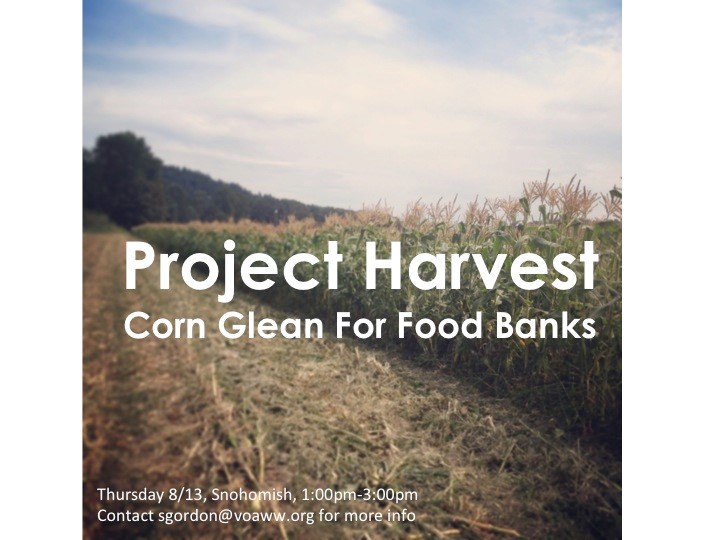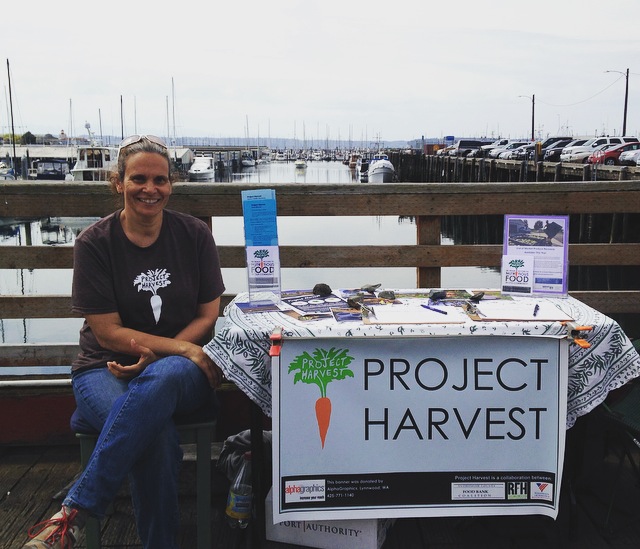How Can We Help?
Set up volunteer recruitment policies
If working within another agency, utilize the volunteer manager or recruiter, and learn the volunteer recruitment procedures regarding training (onsite training or offsite before glean), background checks, court-ordered volunteers, discuss potential risks of the program and create parameters and policies to prevent safety issues (volunteer age range, volunteers transporting produce in their own vehicles, tree climbing, ladder use, etc.), and learn about program insurance/liability coverage.
Outreach
Marketing: When starting community outreach, a good place to start is creating marketing materials. Create a mission statement and logo for your program. Try to create flyers and handouts that catch the eye of your future volunteers! Take a trip out to a local farm and take some photos to share with people how beautiful these settings are and work them into marketing materials.
Spread the word: Email or call various groups in the community (church groups, Girl Scouts, Boy Scouts, Boys and Girls Clubs, summer camps), post volunteer descriptions on online resources (volunteer match.com, idealist.org, United Way, Craigslist), research local newspaper/local magazine resources, attend community events as an exhibitor, or attend farmers market (this would be a great long-term volunteer position as it is timely for a gleaning coordinator working to develop a program; work with a farmers market to set up a booth once a week or once a month for outreach purposes). As you collect contact info keep records of your future contacts in an excel spreadsheet. When you have an event or update, simply copy and paste the email column into your BCC email, super easy!
Volunteer Engagement
When there is still excitement surrounding a gleaning event, make sure to post photos on social media. After the gleaning event, email a quick thank you and report the poundage and what food banks received the food so they know the full story! Send monthly newsletters to keep volunteers posted on the program’s story, poundage, and future opportunities. This is a great opportunity to highlight a farm and give recognition to a key volunteer in a “volunteer spotlight” section.
Coordinating Gleans
Gleaning event opportunities are easily broadcasted via email. Many gleans are small, and it is ideal to limit the number of volunteers to a certain number. When setting up glean that needs to be capped at a certain number, send out an email blast with a small amount of text explaining when, where (town), what produce, and how many volunteers are needed. When volunteers RSVP, then email more information with specifics (address of farm/home, directions, what to wear, what to bring, helpful FYIs (like if there will be a bathroom at the gleaning site), and attach a waiver of liability and terms of participation for them to look over before event). This is a good approach to prevent walk-on volunteers at events on private property to provide privacy for the homeowners/small-scale farms, especially if you plan to do on-site training. For larger events, put the time into creating a more eye-catching first email such as including a photo or fun image. This may help recruit a few extra volunteers for your events.
Volunteer Retention
Of course, thanking volunteers in any way possible is the number one policy when retaining volunteers. Another way to retain volunteers is to create a sense of professionalism and organization within your gleaning events. Within the first year of a gleaning program, each glean will be a new scenario – the gleaning coordinator can only do so much to prepare. When a gleaning coordinator is walking into a new gleaning scenario, professionalism will hinge upon strong communication with the donor to be prepared, strong communication with volunteers to prepare them, and honesty and transparency with the volunteers attending the event. Be transparent and honest with volunteers if you are going into events unsure of conditions of produce or other uncertainties. Communicating ahead of time to volunteers that you appreciate them “rolling with the punches” of your new program so you do not come across as unorganized when a glean presents a new scenario will go a long way!




